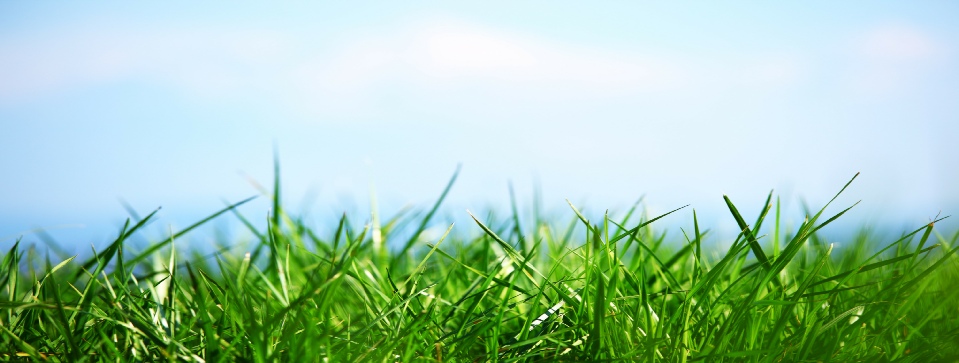

Does the DNA develop and improve as they say?
Evolution
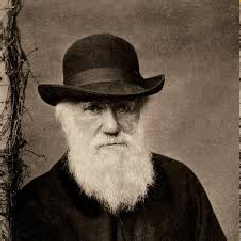 The theory of evolution, based on Darwin, tells us that all living organisms, including humans, improve and develops from generation to generation, through natural selection. The adaptable species develops and improves itself over time to adapt to the environment and to obtain food in the food chain. A long-
The theory of evolution, based on Darwin, tells us that all living organisms, including humans, improve and develops from generation to generation, through natural selection. The adaptable species develops and improves itself over time to adapt to the environment and to obtain food in the food chain. A long-
Natural development and change
We can confirm that there is an on-
Galapagos-
Darwinism began with the publication of his book "The Origin of Species" in 1859. Much of the research results from Galapagos Island off South America were used as evidence for his book. In this work Darwin argued a thorough and critical view of evolution that still applies today. His theory contained several elements, which advantageously can be considered separately:
It has taken place and is taking place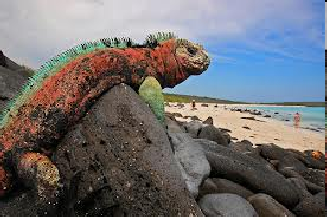 an evolution, i.e. that species are mutable.
an evolution, i.e. that species are mutable.
Today's species have evolved from a common ancestor.
This is possible because the species can divide into two.
Evolution happens gradually, not instantly.
The driving force in this evolution is natural selection.
Another important factor is the evolution of sexual selection.
Darwin was not the only one and not even the first one that has had these thoughts. However, he was the first to put them into context, supporting them with thorough documentation, and realized that they built up a theory to explain the genesis of biodiversity. Darwin didn't talk about evolution but of "descent with modification". 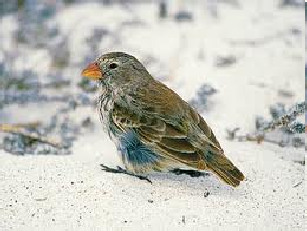 The term evolution has come later. Darwin's starting point for making conclusions in his research was based on simple discoveries. Simultaneously he believed that the cells consisted of a few fibers, much like a gel clot. He thought for example that Finches on Galapagos had lost flight ability and had an adapted beak, enabling them to eat nuts. This reflects a trend, a self created mutation driven by the environment in Galapagos over time. The point was that they had adapted to the environment for survival by developing these properties.
The term evolution has come later. Darwin's starting point for making conclusions in his research was based on simple discoveries. Simultaneously he believed that the cells consisted of a few fibers, much like a gel clot. He thought for example that Finches on Galapagos had lost flight ability and had an adapted beak, enabling them to eat nuts. This reflects a trend, a self created mutation driven by the environment in Galapagos over time. The point was that they had adapted to the environment for survival by developing these properties.
He had the same thoughts about the marine iguana, swimming under the sea to eat algae, and diving to the seabed outside Galappagos and "graze" under water. Recent research shows that the genetic characteristics of these species have not improved compared to similar species. But amoung others Finches which are unable to fly, presumably that is the result of inbreeding, i.e. it has lost some of those genetic characteristics Its ancestors had who managed to fly. The tribal father-
The marine iguana has the same swimming and survival characteristics as some other lizard species elsewhere in the world. There are seven similar lizard species on other islands that are somewhat greener in color. The common denominator is that there has been a change, that they are a species with less functional gene function than tribal fathers of the animal. There are also birds that can fly from the island (for instance the albatross) and these have the same characteristics as their relatives elsewhere in the world.
Development or natural adaption?
It is clear that God created animals with abilities to adapt to the environment in several areas, such as the blind cave fish that has lost sight as a result that they have been locked in dark water caves. It has been researched on this fish species, and they have succeeded in transplanting eye tissue from a similar sighted species, surface fish of the same species of fish (Astyanax mexicanus) where they operated a natural lens in younger fish, and the eye evolved in a direction such that the blind cave fish almost developed a complete eye in a matter of months. They have also been breeding this fish species with other blind cave fish from four different places and a few of the offspring were born with eyesight. This shows that the extreme changes in the environment, enables some fish species to survive, but then loses, for instance, the ability to see, as the blind cave fish have done. Whether this is a result of Inbreeding or fish losing sight due to lack of stimulation for the eyes, or some other circumstances, is not known, but it proves that the species can survive in extreme situations and that the species may lose properties over time. When there is a notable change to a mutation, does the mutation bring a reduction of information in the genetic characteristics, or does it supply new information?
That is the question that Darwin studied but had no knowledge about the way we have today. Due to this natural adaptation to the environment, as Finches and blind cave fish on Galapagos have been through. Mutation: 1) -
Created with adaptation properties
If you study the species, you see that many animal species have highly sophisticated structure. A Humboldt Octopus with jet-
This results in different species having a pretty cool 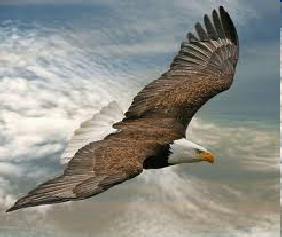 repertoire of tricks and the ability to adapt and acclimatize themselves in relation to different external and internal ennvironments in nature (Garret and Rosenthal). Created with fast, natural adaptation properties, not the development of new improved features driven by nature over milions of years. Another example is the Eagle which has a wing span that the latest aircrafts have started to emulate. The reason is that the soaring Eagle gets greater flow and less turbulence when the outermost part of its' wings are bent upwards,
repertoire of tricks and the ability to adapt and acclimatize themselves in relation to different external and internal ennvironments in nature (Garret and Rosenthal). Created with fast, natural adaptation properties, not the development of new improved features driven by nature over milions of years. Another example is the Eagle which has a wing span that the latest aircrafts have started to emulate. The reason is that the soaring Eagle gets greater flow and less turbulence when the outermost part of its' wings are bent upwards,
as known to the Eagles! I wonder how the Eagle found out? Modern aircraft have the tip of the wing bent upward for the same reason. It has been found in research laboratories for the aircraft, the flight becomes more stable with such a wing-
What about us humans?
Let us go over to the DNA of man. Is there something in the 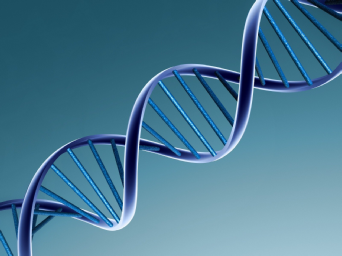 DNA of humans that support this? Or is it that there is a catalyst in DNA that constantly improves the properties of the human being over time as a result of changes in the environment? Does it add by itself new enhanced features and information over time, like the theory of evolution says? -
DNA of humans that support this? Or is it that there is a catalyst in DNA that constantly improves the properties of the human being over time as a result of changes in the environment? Does it add by itself new enhanced features and information over time, like the theory of evolution says? -
Recent research shows that all DNA-
DNA is the body's information storage system, which has all the information needed by the body for all the functions and processes of liberation of energy, survival, degradation and construction and development throughout life. Two millimeters of DNA cells, i.e. the tip of a pencil, which is quite small, contains enough information to accommodate a giant library. If you gathered this information in books, stacked them one on top of the other they would reach from here to the sun, or 500 times from here to the moon! On a hard drive, -
All this information and complexity that exists in the cells, make many scientists today sway in the direction of intelligent design. This is because all information must logically have a transmitter, a sensor. A computer must have someone to add programs to function; a book must have an author, etc.
Another expression of design is our body, consisting of 100 trillion cells. The cells work in perfect harmony with each other, i.e. a uniform distribution of nutrients to each cell. Without some cells "fighting" against one another. A clear expression of intelligent design.
Developments in genetic cells -
Is there anything in the cells indicating that DNA improves from generation to generation as the theory of evolution says? Quite the opposite. Recent research shows that our DNA de-
Aging from a biblical perspective
Before the fall of man, mankind walked with God and did not 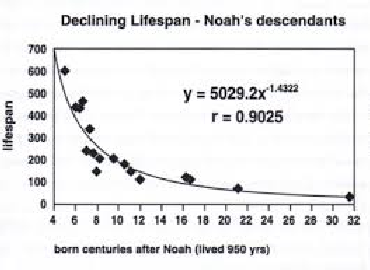 die. After the fall of man, mankind had to die, and Man was expelled from the Garden of Eden. An investigation of the age of Adam and further from the beginning of the Bible onward, one finds a gradual downward aging curve up to the time of Jesus. Age was much higher in the first humans. Adam, for example, lived for over 900 years, according to the Bible. It may seem as if people lived much longer before the Flood came, than afterwards. Just before the flood, God established human age of 120 years. If one studies this with scientific data, one can find a correlation between age and the number of mutations that have occurred in our DNA from the first man to the present day. Perhaps the high age of the Old Testament have a connection with this process? Mutations weakens us over time, which also have an impact on the aging process.
die. After the fall of man, mankind had to die, and Man was expelled from the Garden of Eden. An investigation of the age of Adam and further from the beginning of the Bible onward, one finds a gradual downward aging curve up to the time of Jesus. Age was much higher in the first humans. Adam, for example, lived for over 900 years, according to the Bible. It may seem as if people lived much longer before the Flood came, than afterwards. Just before the flood, God established human age of 120 years. If one studies this with scientific data, one can find a correlation between age and the number of mutations that have occurred in our DNA from the first man to the present day. Perhaps the high age of the Old Testament have a connection with this process? Mutations weakens us over time, which also have an impact on the aging process.
Mutations are errors, copies of cells. -
God's creation
From a demographic point of view is it that we inherit thousands of mutations from our ancestors. One major mutation may give rise to genetically transmitted diseases. From generation to generation transfers approximately. 60-
mutations per person. This means that human DNA gradually deteriorates over time. It does not go up as evolution claims, but it goes down. It has been calculated that, on the basis of how many mutations that occur per year, that humanity is about 220 generations  old. It is also estimated that it will take about 268 generations to come before the mutations are so many that humanity is not able to survive any longer. This is because all the mutations in the cells increase from generation to generation. Eventually becoming so many mutations that it is not possible to survive. The cells collapse due to too many mutations in the cells.
old. It is also estimated that it will take about 268 generations to come before the mutations are so many that humanity is not able to survive any longer. This is because all the mutations in the cells increase from generation to generation. Eventually becoming so many mutations that it is not possible to survive. The cells collapse due to too many mutations in the cells.
The uniqueness of the cell is that during its life span tens of thousands of bad mutations occur, it's only a small portion that is transmitted on. Between 60-
We carry all the thousands of bad mutations. This mutation change causes many diseases to evolve, and new diseases arise. This is a result of the mutation process, which must have begun after the fall. We de-
If you look at these modern studies it shows us an expression that we humans are designed and that we are not a chance in an infinite cosmos, a spontaneous creation that both evolution and big-